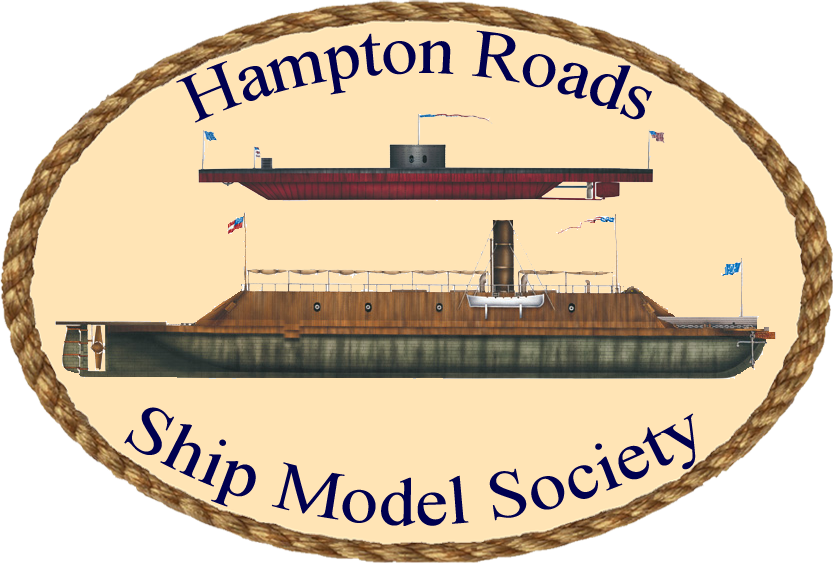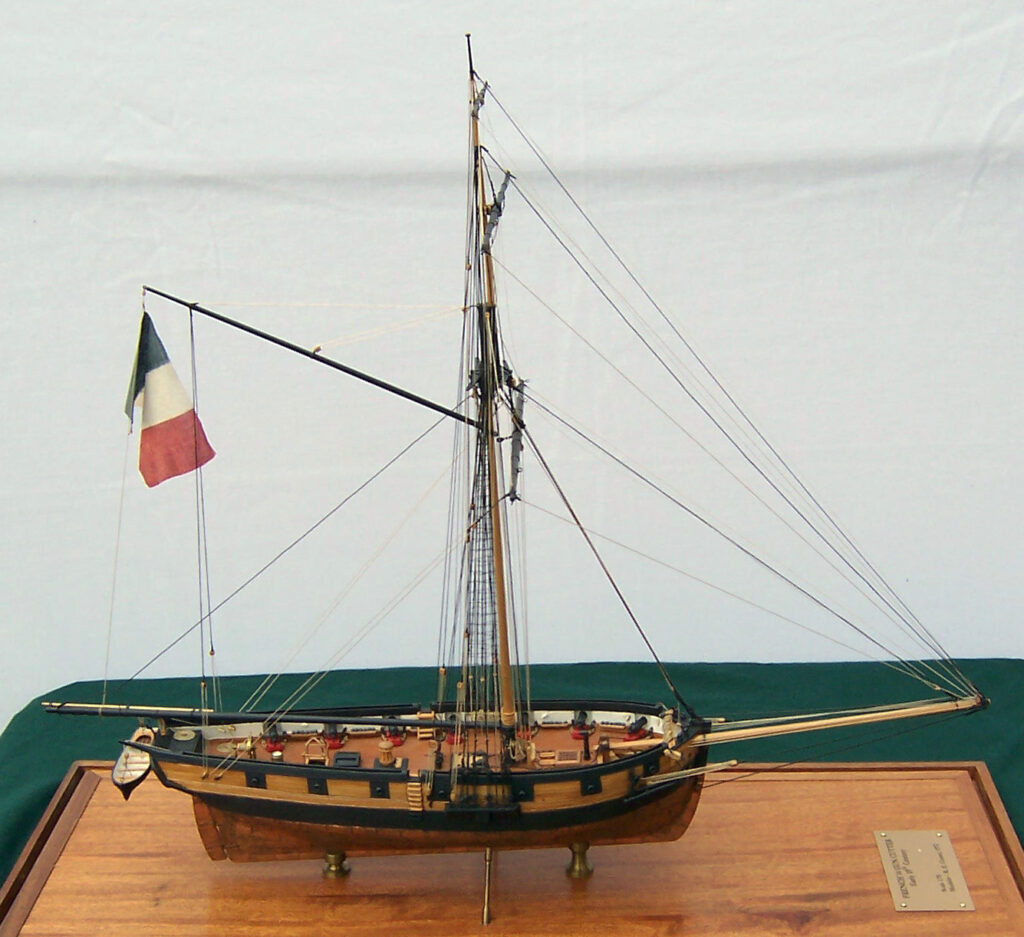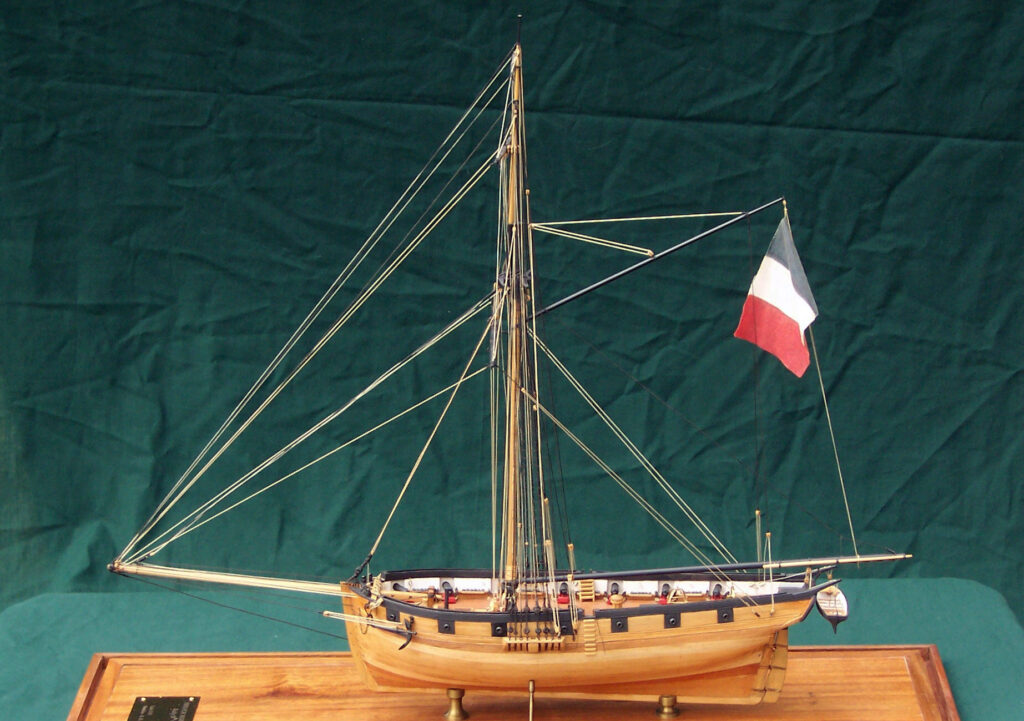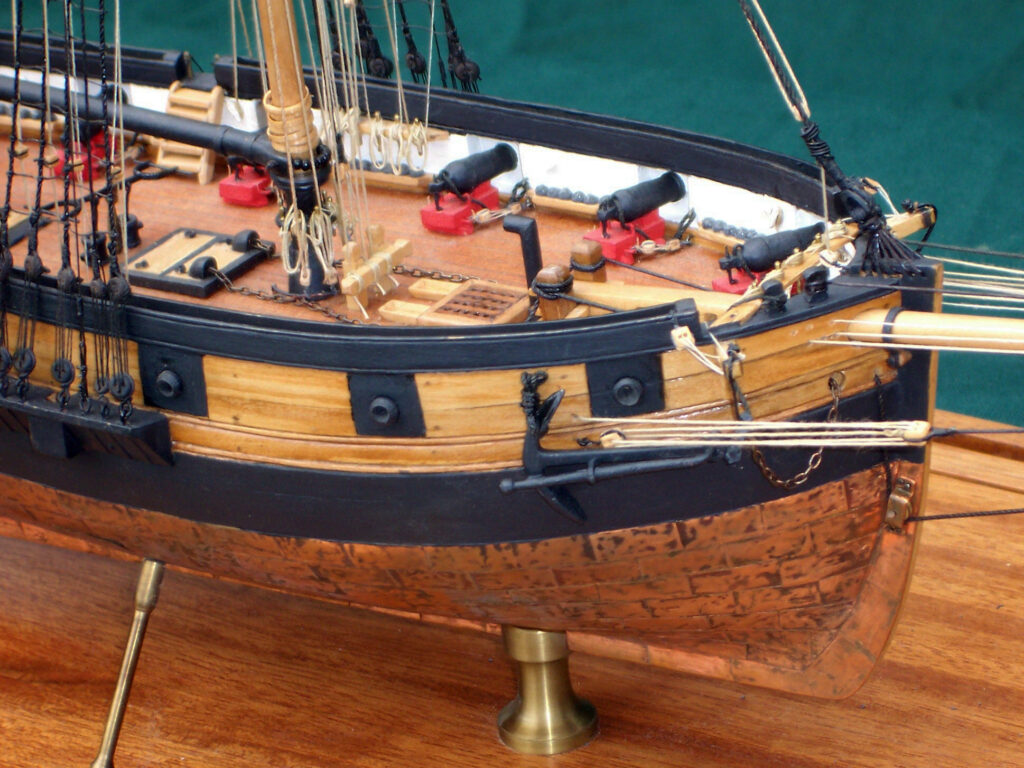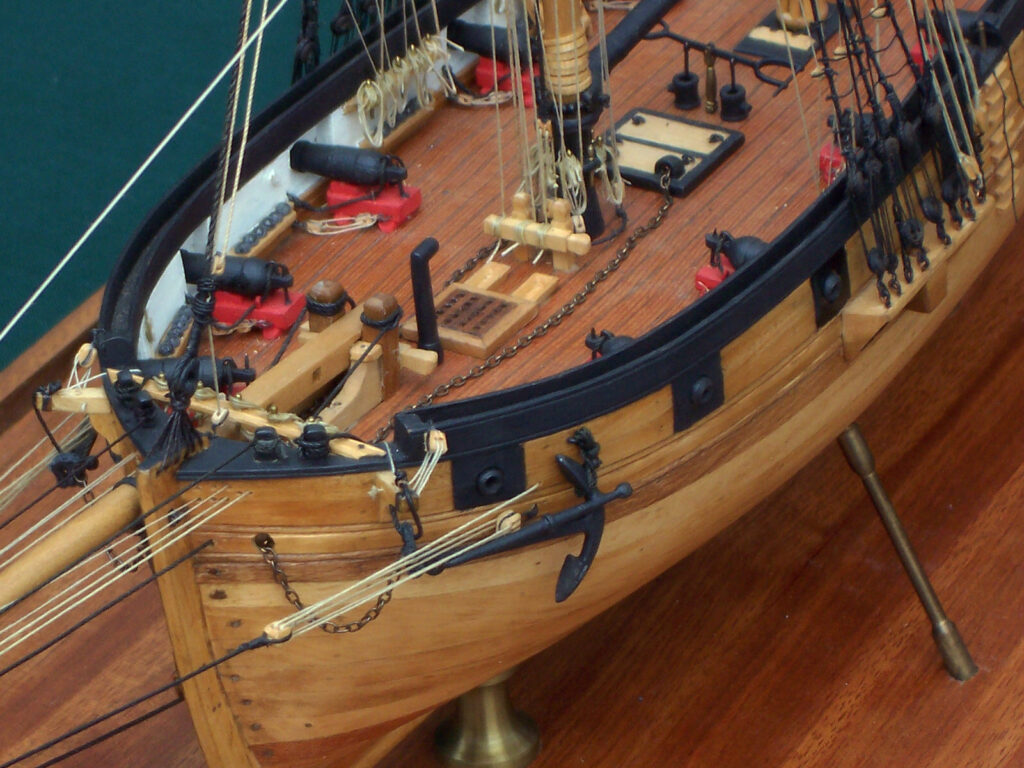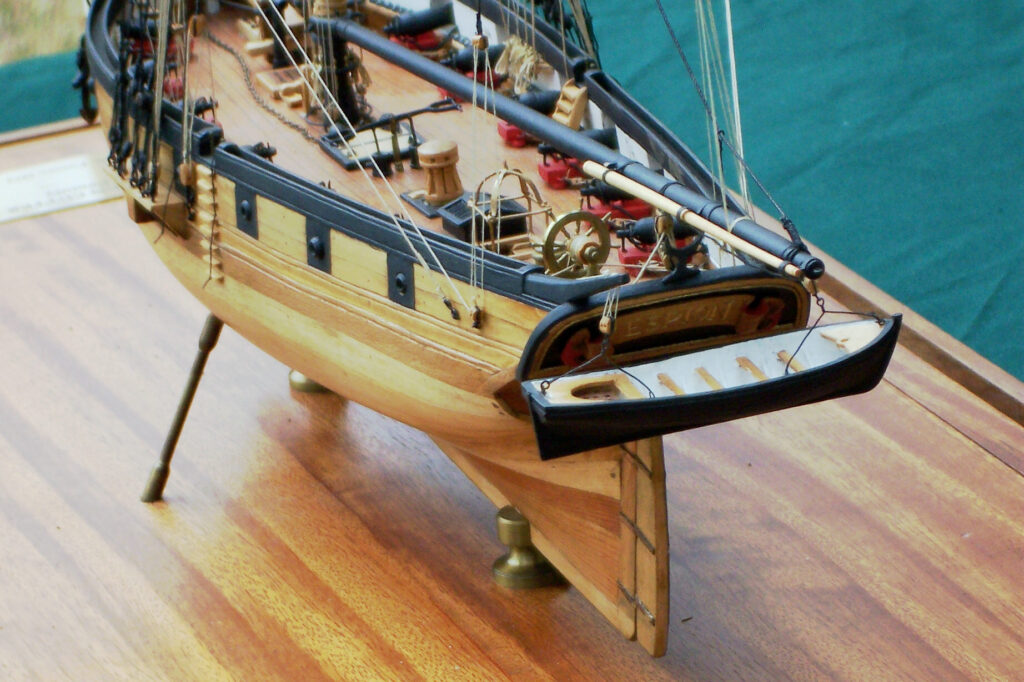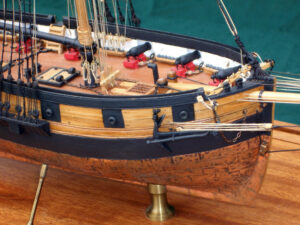
by Bob Comet
Categories:
- Build type: [Scratch]
- Material: [Wood]
- Scale: [1:75]
- Subject Type: [Sloop-of-War]
- Era: [1700-1815]
- Nationality: [France]
- Propulsion: [Sail]
Model Images
About the Model
This model is based on plans purchased from Association Des Amis des Musees de la Marine, in Paris. They are of a cutter found in the museum collection, the prototype being Model No. 21 mg 46. The booklet of plans is very complete and in 1:50 scale. This was too large for my home display, so I reduced the model to a scale of 1:75.
The name ESPION was given the model arbitrarily, based on the description that said the cutters were named for a variety of things, and included one named ESPION (tr. Spy). This amused me and seemed an appropriate name for a vessel who’s duties included revenue enforcement and being a dispatch ship for the fleet.
The scale was such that I did not choose to rig sails. The port side was left clear to show the planking detail. The starboard side was coppered below the water line, and the wale, rail, and hammock stowage were painted black. The masts were left clear and lacquered, with the mast doublings and pole top and cap painted black as were the yards, gaff and boom. This paint scheme follows that shown in photographs of the prototype model included with the plans booklet.
The ship is rigged with linen line, and totally scratch built except for chain and cordage. Rope work is scaled, all seized or whipped, not knotted. Rigging includes all standing rigging, sheets, halyards, clew lines, downhauls, etc. The hull is built plank-over-bulkhead. The carronades are turned from maple and painted, and rigged with breeching and side gun tackles. The wheel is capable of operating the rudder, which is mounted on pintles and gudgeons, and has riveted strapping. The bowsprit is mounted in a ring with a roller at the bottom, and the gear for running the movable bowsprit in board is attached to the starboard side of the stem. The counter has a carved name board, with the ship’s name incised in a carved banner. The sheer plank and the hammock rail planks have decorative beading on their edges. The pump has workable handles and is built as shown in the plan detail.
I did not log construction times, but estimate it at around 300 —350 hours.
The model was entered and displayed in The Mariner’s Museum 1980 Scale Ship Competition and Exhibition, and was awarded a Letter of Commendation.
